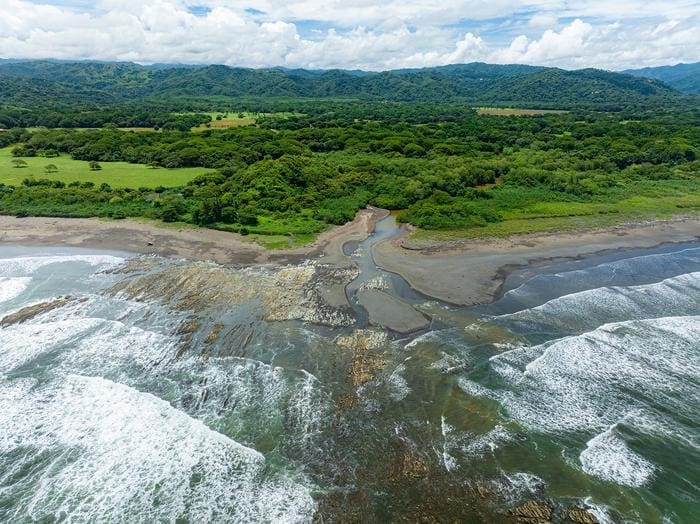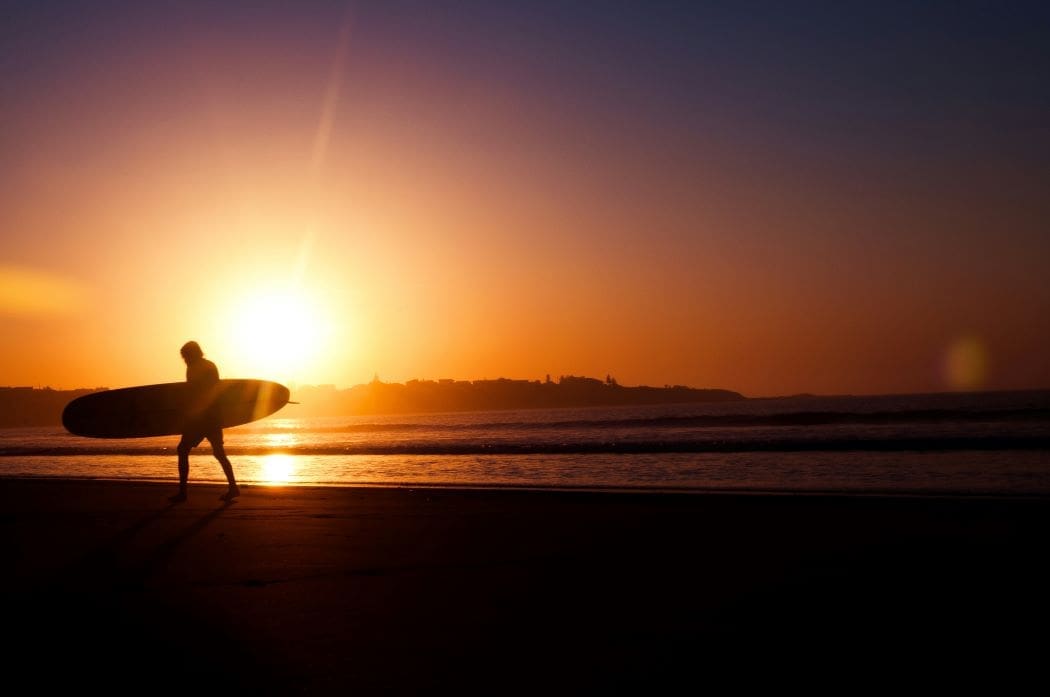Nearly 90 million metric tonnes of planet-warming carbon found surrounding surf breaks across the world; U.S., Australia, Indonesia, Brazil identified as conservation priorities.
A novel study published today in Conservation Science and Practice has found that the forests, mangroves and marshes surrounding surf breaks store almost 90 Mt (million metric tonnes) of climate-stabilizing “irrecoverable carbon,” making these coastal locations essential climate allies and ideal locations for conservation efforts.
Just five countries account for nearly half the carbon stored: surf breaks in the U.S are the most carbon-rich, followed by Australia, Indonesia, Brazil and Panama.

For the study, researchers – including scientists from Conservation International – analyzed more than 4,800 popular surf spots across 113 countries and found that immediately surrounding areas (within 1 kilometer of the waves) store over 88 Mt of irrecoverable carbon – that’s roughly equivalent to the annual emissions from 77 million gas-powered cars. When the surrounding area is expanded to 3 kilometers, the amount of carbon stored in the ecosystems more than doubles to 191.7 Mt.
Irrecoverable carbon refers to the carbon-rich lands humanity must protect to prevent the worst impacts of climate change. Conservation International scientists coined the term in 2020 and, in 2021, mapped all irrecoverable carbon around the world. Additional research also found irrecoverable carbon areas overlap with places containing high concentrations of biodiversity.
This overlap proved true for surf breaks, with nearly a quarter (17.2 Mt) of the total 88.3 Mt of irrecoverable carbon found within Key Biodiversity Areas, areas that contribute significantly to the planet’s species richness and overall health. But only 3% of this 17.2 Mt – representing areas with high amounts of both carbon and biodiversity – are formally protected. Altogether, less than a third of all surf ecosystems worldwide are protected.
Expanding protection of surf ecosystems could help keep climate-warming carbon from entering the atmosphere and play a role in halting and reversing biodiversity loss – the world’s two greatest environmental challenges.
For example, Surf Protected Areas – which have been pioneered by Conservation International and Save The Waves Coalition, a partner on the study – work to establish legal protections for surf breaks and their surrounding areas from threats like irresponsible tourism and development, forest and mangrove cutting, coral and sand mining, destructive fishing and plastic pollution.
“This research demonstrates the enormous role that protection of surf breaks and surrounding coastal areas can have in our global fight to reverse biodiversity loss and combat climate change,” said Scott Atkinson, a surfer, senior director of surf conservation at Conservation International and an author of the study.
“Our study shows where, exactly, we must now focus on legally protecting these areas. Surfers across the world are fantastic allies for efforts like this – they love the ocean, know that it is threatened and are extremely motivated to protect it. They’ve been on board, so to speak, helping to lead the establishment of all the Surf Protected Areas we’ve partnered to create,” he added.
To date, Conservation International has worked with partners to establish 30 Surf Protected Areas in Indonesia, Costa Rica and Peru. These Surf Protected Areas are centered on surf breaks and seek to protect their larger surrounding ecosystems including coastal forests, mangrove, beaches, seagrass, coral reefs and the waves themselves.
Over half of these (23 Surf Protected Areas) have been established in Indonesia, which was used in the paper as a case study in creating an effective network of community-based protections. Collectively, the 23 locations form Indonesia’s initial Surf Protected Areas Network covering more than 60,000 hectares, which can be expanded to hundreds of world-class surf sites across the incredibly biodiverse and carbon-rich country.
Atkinson also highlighted the positive impacts of the community-based Surf Protected Areas on Morotai Island in Indonesia, the focus of the paper’s case study: “They are protecting precious marine and coastal ecosystems and strengthening community bonds and cultural heritage. Local people on Morotai have surfed on handmade wooden boards since at least World War II and have a strong surf culture.”
He continued: “Additionally, local surf and conservation-related livelihoods are starting to flourish, with eco-friendly tourism and sustainable fishing practices becoming the norm. The community’s involvement in conservation efforts has fostered a sense of pride and ownership, showcasing the power of grassroots initiatives in achieving lasting environmental and social benefits.”
Jacob Bukoski, assistant professor at Oregon State University’s College of Forestry and the lead author of the study, said: “Our results suggest a significant opportunity for surf conservation to strengthen protection of climate-critical carbon stocks, including those found in blue carbon ecosystems such as mangroves and sea grasses. Expanded conservation of surf ecosystems – both their marine and onshore components – could provide a range of benefits in addition to biodiversity conservation and climate mitigation.”
The report was produced by a team of scientists from Conservation International and its Surf Conservation program, Oregon State University, Save The Waves Coalition and California State University at Channel Islands.
***
About Conservation International: Conservation International protects nature for the benefit of humanity. Through science, policy, fieldwork and finance, we spotlight and secure the most important places in nature for the climate, for biodiversity and for people. With offices in 30 countries and projects in more than 100 countries, Conservation International partners with governments, companies, civil society, Indigenous peoples and local communities to help people and nature thrive together.
About Save The Waves Coalition: Established in 2003, Save The Waves Coalition (STW) is an international nonprofit with a mission to protect surf ecosystems across the globe in partnership with local communities. To date, STW has 12 established World Surfing Reserves and their global conservation projects have led to the protection and preservation of surf breaks and coastlines from California to Australia, Brazil, Mexico, Chile, Portugal and beyond.
Journal Reference:
Jacob J. Bukoski, Scott R. Atkinson, Marissa Anne S. Miller, Diego A. Sancho-Gallegos, Mara Arroyo, Kellee Koenig, Dan R. Reineman, John N. Kittinger, ‘Co-occurrence of surf breaks and carbon-dense ecosystems suggests opportunities for coastal conservation’, Conservation Science and Practice (2024). DOI: 10.1111/csp2.13193 | https://doi.org/10.1111/csp2.13193
Article Source:
Press Release/Material by Conservation International
Featured image credit: Rafael Leão | Unsplash




